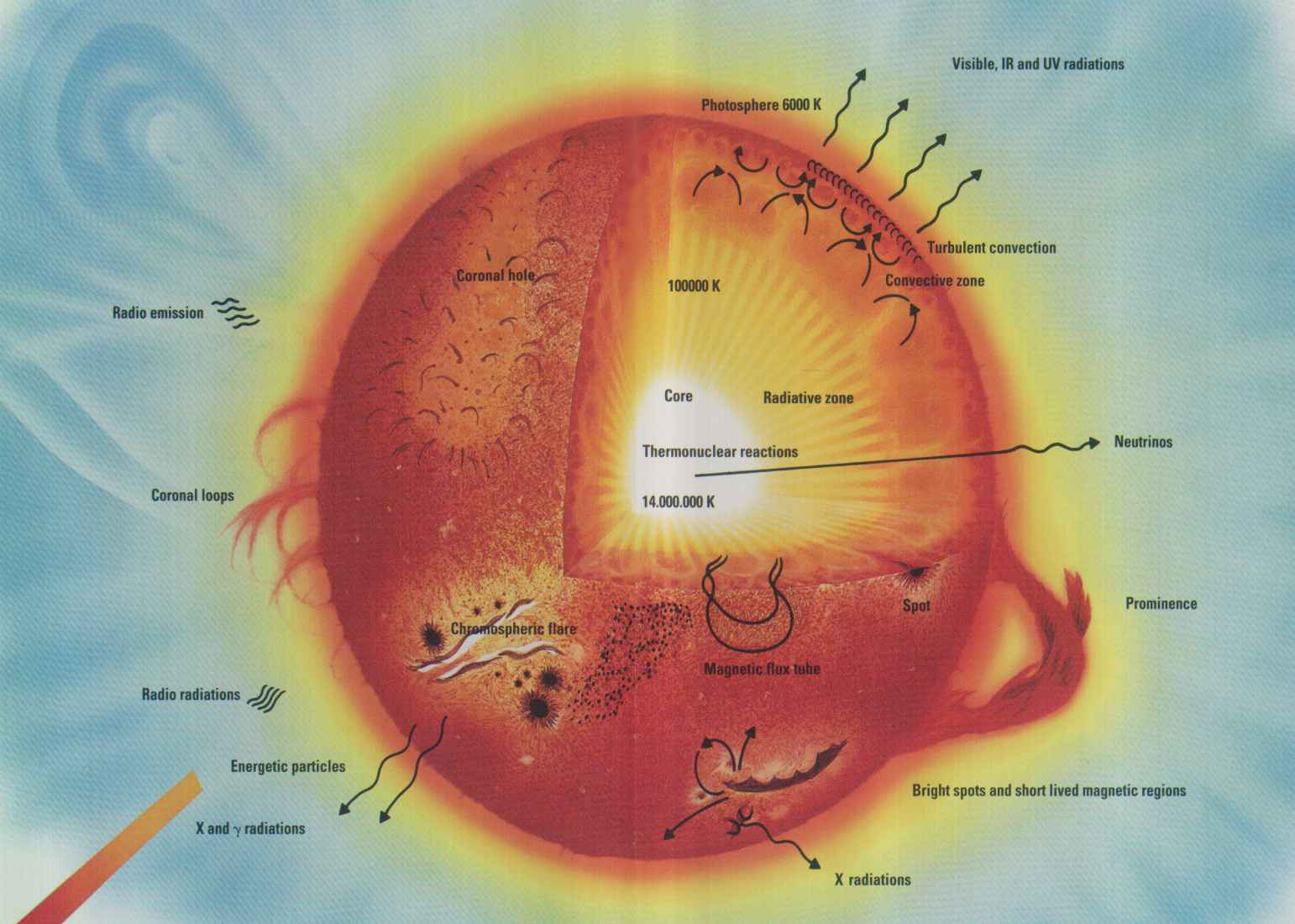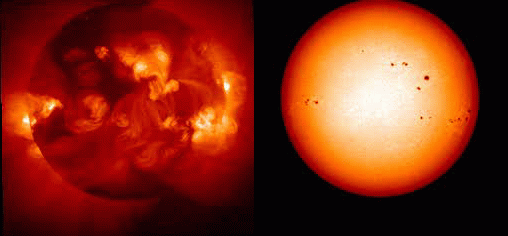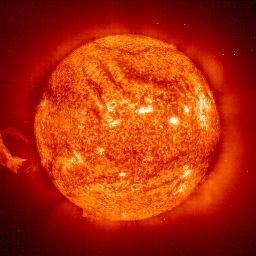The Sun as a Star
Remember: Sun = Big Ball O'
Gas!
The sun is a typical star:
- Mass = 2x1030 kg,
compared to
- Supergiant stars (eg Rigel), which are 10-100x more
massive
- Dwarf stars, which are 1/10 the mass of the Sun
- Radius = 700,000 km,
compared to
- Supergiants (Radius greater than Mars' orbit!)
- White dwarfs (Earth sized!)
- Luminosity = 3.8x1026
Watts = 3.8x1033 erg/s, compared to
- Supergiants (1,000,000x brighter)
- Dwarfs (100x fainter)
- Surface composition
- 70% Hydrogen
- 28% Helium
- 2% heavier elements
("metals": O, N,
C, Fe, etc)
- Strong magnetic field (nearly 10,000x that of the Earth)
The Physical Structure of the Sun

Core - innermost 10-20%.
High temperature, pressure. Nuclear reactions!
Radiative Zone - inner
70%. Energy moves by radiation.
Convective Zone - outer
30%. Energy moves by convection.
Photosphere - visible surface.
Sunspots, prominances.
Chromosphere - lower atmosphere.
Corona - outer atmosphere.
High temperature, low density. Origin of solar wind.
The Sun in Motion

Rotation period: 26 days at equator, 36 days at pole
-- not solid.
The Active Sun - A Solar Prominance (4-Sep-1999)

